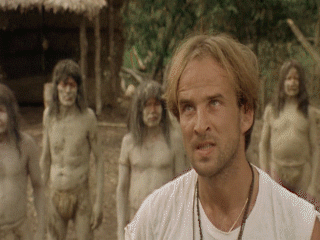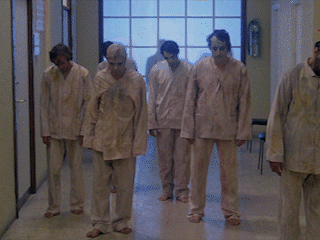Blood Feast 1963 – From Censorship to Cult Classic
Blood Feast 1963 is a movie that has both fascinated and horrified audiences for over five decades. This cult classic has a unique history that speaks to the power of censorship and the allure of the forbidden. Directed by horror legend Herschell Gordon Lewis, Blood Feast 1963 was one of the first movies to showcase graphic violence and gore on the big screen. It tells the story of an Egyptian caterer who uses human body parts in his dishes to appease the goddess Ishtar. Despite being panned by critics upon its release, Blood Feast 1963 went on to become a cult classic, inspiring countless imitators and paving the way for the modern horror genre. In this article, we’ll explore the fascinating history of Blood Feast 1963, from its controversial beginnings to its enduring legacy as a cult classic.
The Controversial Release of Blood Feast 1963
Blood Feast 1963 was released in 1963, and its release was met with controversy and outrage. The movie was banned in several countries, including the United Kingdom, for its graphic violence and gore. In the United States, it was only shown in drive-in theaters and grindhouses, which were typically known for showing low-budget, exploitative films.
Despite the controversy surrounding its release, Blood Feast 1963 quickly gained a cult following. Fans of the movie were drawn to its graphic violence and shocking subject matter. The movie’s director, Herschell Gordon Lewis, had a background in advertising, and he knew how to market his movies to a specific audience. The controversy surrounding Blood Feast 1963 only helped to increase its notoriety, making it a must-see for horror fans.
The Plot and Characters of Blood Feast 1963
Blood Feast 1963 tells the story of an Egyptian caterer named Fuad Ramses, who uses human body parts in his dishes to appease the goddess Ishtar. The movie opens with a warning that the film is not for the faint of heart, and it delivers on that promise.
The movie’s protagonist, Fuad Ramses, is played by actor Mal Arnold. Ramses is a creepy and menacing character who is obsessed with the goddess Ishtar. He believes that by offering her human sacrifices in his dishes, he will be able to bring her back to life. The movie also features a cast of supporting characters, including a private investigator, a police detective, and Ramses’s love interest, Suzette.
The Impact of Blood Feast 1963 on the Horror Genre
Blood Feast 1963 had a significant impact on the horror genre. It was one of the first movies to showcase graphic violence and gore on the big screen, paving the way for future horror films. The movie inspired countless imitators, and its influence can be seen in modern horror films like Saw and Hostel.
Blood Feast 1963 was also significant because it marked the beginning of the “splatter” subgenre of horror films. These movies are known for their graphic violence and gore, and they have become a staple of the horror genre. The movie’s success paved the way for future splatter films like The Texas Chainsaw Massacre and Dawn of the Dead.
The Legacy of Blood Feast 1963
Blood Feast 1963 has left an enduring legacy as a cult classic. The movie has been released on DVD and Blu-ray, and it continues to be screened at film festivals and events around the world. The movie’s impact on the horror genre cannot be overstated, and it remains a must-see for horror fans.
The movie also inspired a remake in 2016, which was directed by Marcel Walz. The remake received mixed reviews, but it was still a testament to the enduring legacy of the original film. Blood Feast 1963 has also been referenced in popular culture, including in the TV series American Horror Story.
The Cultural Significance of Blood Feast 1963
Blood Feast 1963 is significant not only for its impact on the horror genre but also for its cultural significance. The movie was released at a time when the United States was going through significant social and cultural changes. The Civil Rights Movement was in full swing, and the movie’s portrayal of Egyptians and African Americans was controversial.
The movie’s depiction of violence and gore was also controversial, and it sparked a national debate about censorship in the arts. The controversy surrounding Blood Feast 1963 helped to solidify the movie’s place in popular culture and make it a cult classic.
Behind the Scenes of Blood Feast 1963
Blood Feast 1963 was directed by Herschell Gordon Lewis, who is often referred to as the “Godfather of Gore.” Lewis was known for his exploitation films, and Blood Feast 1963 was no exception. The movie was filmed on a shoestring budget, and much of the gore was created using animal organs and other materials.
Despite its low budget, Blood Feast 1963 was a technical marvel. The movie’s special effects were groundbreaking for the time, and they helped to create a sense of realism that made the violence even more shocking.
The Reception of Blood Feast 1963 by Critics and Audiences
Upon its release, Blood Feast 1963 was panned by critics. Many critics found the movie to be too violent and disturbing, and they criticized its low budget and poor acting. Despite the negative reviews, the movie became a cult classic, and it continues to be a favorite among horror fans.
Over the years, some critics have revisited Blood Feast 1963 and have come to appreciate its influence on the horror genre. The movie’s impact on the splatter subgenre cannot be overstated, and it remains a significant film in the history of horror.
Blood Feast 1963’s Influence on Future Horror Films
Blood Feast 1963 has had a significant influence on future horror films. The movie’s graphic violence and gore paved the way for the splatter subgenre of horror films, which remains popular to this day. The movie also inspired countless imitators, including movies like The Texas Chainsaw Massacre and Dawn of the Dead.
Blood Feast 1963 also helped to redefine the horror genre, pushing it in a new and more extreme direction. The movie’s impact on the horror genre can still be seen in modern horror films like Saw and Hostel, which continue to push the boundaries of what is acceptable in horror.
Conclusion: Why Blood Feast 1963 Remains a Cult Classic
Blood Feast 1963 remains a cult classic because of its unique history and enduring legacy. The movie’s graphic violence and gore were controversial at the time of its release, and they continue to shock and horrify audiences today. The movie’s influence on the horror genre cannot be overstated, and it remains a must-see for horror fans.
Blood Feast 1963 also has cultural significance, representing a time of significant social and cultural change in the United States. The controversy surrounding the movie helped to solidify its place in popular culture and make it a cult classic.
Overall, Blood Feast 1963 is a fascinating movie that continues to capture the imaginations of horror fans around the world. Its enduring legacy speaks to the power of censorship and the allure of the forbidden, making it a classic of the horror genre.





